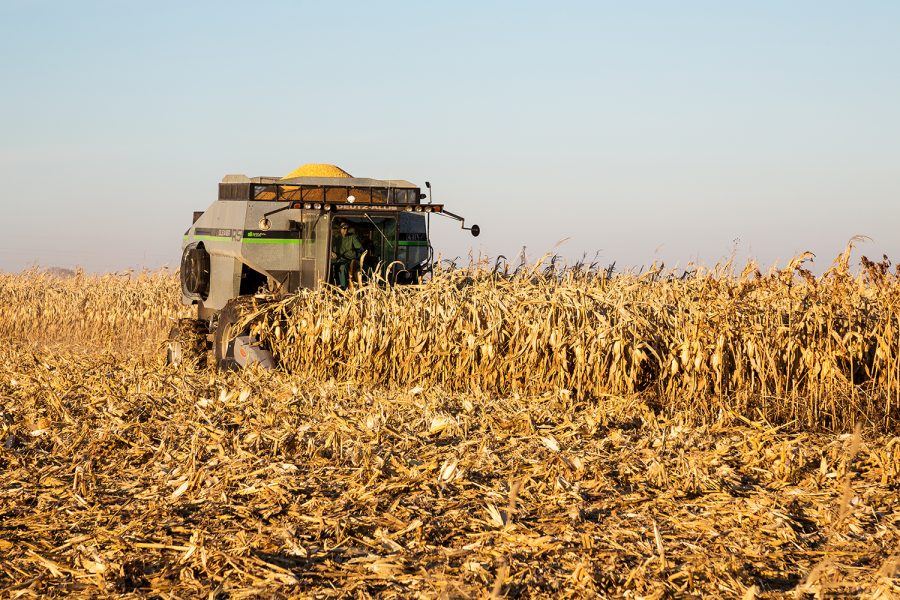Vibrations from vehicles take a toll on farmers’ backs
A recent UI study has found that many agricultural vehicles emit vibrations that can lead to back pain.
A farmer harvests corn near Washington, Iowa on Sunday, Nov. 19, 2017.
October 11, 2018
With harvest season in full swing, farmers and agricultural workers can be seen busy in the fields. However, for farmers in the U.S., every day could result in a potential injury, because the occupation carries with it a number of possible risks.
A recent University of Iowa study has investigated how countless hours in agricultural vehicles can potentially build up to create back pain.
The study from the UI College of Public of Health specifically focuses on the effects of vibrations from farm equipment. Based on the findings, people who spend long hours operating agricultural vehicles appear more susceptible to muscular or back pain.
RELATED: Iowa farmers facing increased mental health concerns
“Several years ago, we recruited a sample of about 118 farmers across a nine-state region,” said UI Associate Professor Nathan Fethke, the lead investigator of the study. “The objective of the study was really to follow these individuals for a period of time and get a history on their experience of muscular skeletal pain differences in different body areas.”
Since the original study, Fethke has focused on how vibrations from machinery are associated with muscular skeletal pain. He and his team visited 55 farms to collect data, using sensors on and below the seat of the vehicles to detect vibration levels.
Fethke and his team studied 112 vehicles, including tractors, forklifts, skid loaders, combines, all-terrain vehicles, and forklifts.
The results identified whole-body vibrations as a risk factor for back pain.
RELATED: New program through UI center seeks to end farming-related accidents
“Vibration is hard on your body and can lead to muscular skeletal issues,” UI Associate Professor Diane Rohlman said. “Trying to reduce your time [on an agricultural vehicle], taking breaks, and looking at your seat and getting a vibration dampening seat are some of the factors you can put into place to help people.”
UI Clinical Assistant Professor Brandi Janssen, the director of Iowa’s Center for Agricultural Safety & Health, said that although there are standards for whole body vibrations in Europe, they are not enforced in the United States.
“That’s why the research is important to understand exactly how much vibration people are exposed to when they’re operating different types of equipment,” she said.
Many farmers and agricultural workers are responsible for a variety of tasks apart from workng in vehicles, which often carry their own inherent risk.
“In Iowa, agriculture tends to be responsible for higher rates of fatal injuries than any other occupation in the state,” Janssen said. “The more recent information from our Department of Public Health says that even though farmers are only about 5 percent of the workforce, they’re about 30 percent of the injuries.”
She said the hazards are often related to large machinery, livestock production, confined spaces, or fall hazards. She advised checking up on safety equipment features and receiving training before handling livestock.
Rohlman said exposure to things such as dust and gases can have long-term effects on people’s health as well.
Another issue, Rohlman said, is that older tractors usually don’t have a rollover protective structure, which prevents a person from being crushed in the event a tractor rolls on its side.
“When we look at the fatalities here in Iowa and in the Midwest, we see that tractor rollovers are a big part of that problem,” she said.






